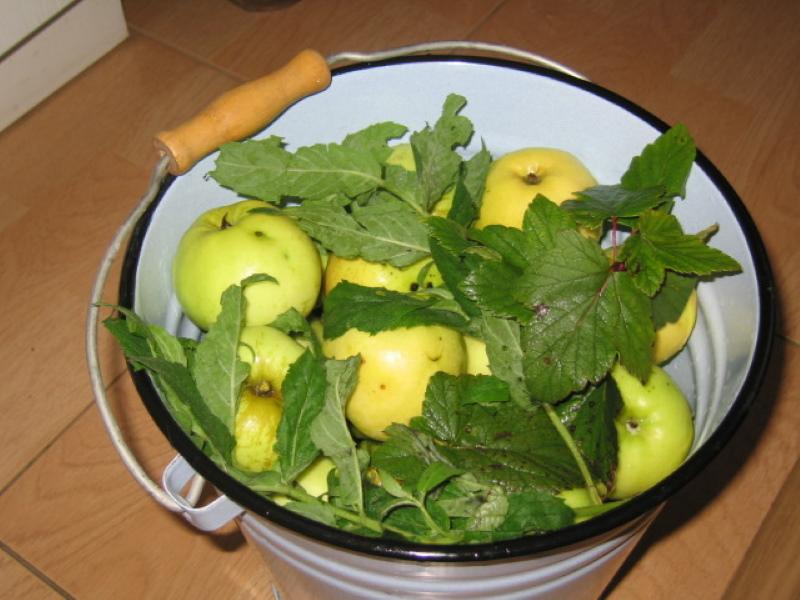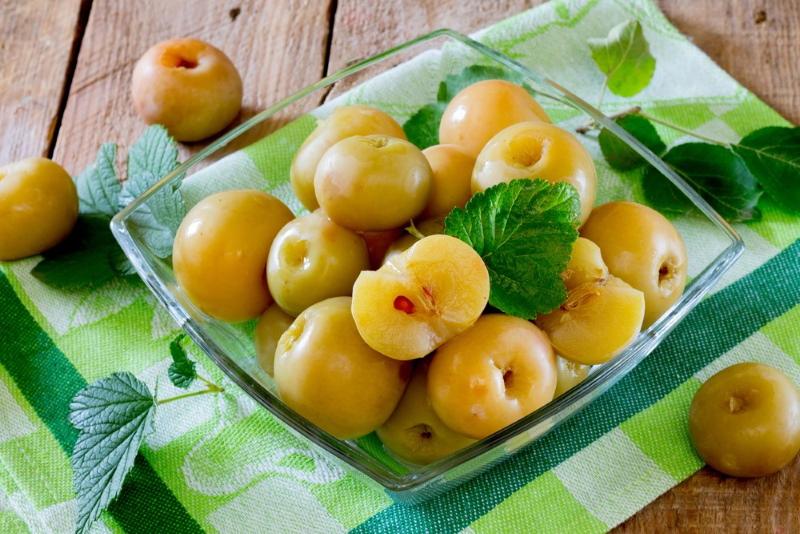Sour dessert for gourmets - how to soak apples for the winter in a bucket, all the details of cooking
 From the smell of soaked apples, the stomach involuntarily begins to secrete juice, and there is no strength to resist not to taste them. Our ancestors harvested them using heavy oak barrels. But today the question of how to wet apples for the winter in a bucket is more relevant. And not only because it is difficult to find a high-quality, real oak barrel, but to buy it even more expensive than store-bought apples. It's just that modern housewives practically do not bother with such a scale of winter harvesting.
From the smell of soaked apples, the stomach involuntarily begins to secrete juice, and there is no strength to resist not to taste them. Our ancestors harvested them using heavy oak barrels. But today the question of how to wet apples for the winter in a bucket is more relevant. And not only because it is difficult to find a high-quality, real oak barrel, but to buy it even more expensive than store-bought apples. It's just that modern housewives practically do not bother with such a scale of winter harvesting.
A bucket is the most convenient and practical dish for which you don't need so much space. If you want more crunchy, sour fruit, make 2 buckets. And many even ferment fruits in ordinary 3-liter bottles. However, the main thing is not the dishes, but its contents. What it will be depends only on your taste preferences, because there are many recipes for soaked apples.
Which apples are best for peeing

Keep in mind that by using autumn apples, you will get a juicy and more acidic snack. And from winter varieties apples are obtained sweeter, but with crumbly pulp. In addition, before wetting, you will need to withstand winter species for almost a month for them to "reach" and become sweeter.
If there is no choice at all and only a summer variety is available, you can soak it too. Just do it right after harvesting and do not store such a snack for a long time so that it does not soften at all.
How to wet apples for the winter in a bucket - step by step instructions
 First of all, prepare a bucket - it must be enameled, be sure to be whole. And preferably with a lid if you plan to store the workpiece in this container later. If you will transfer to jars, the lid is not needed, a cut of clean cloth is enough to cover the top.
First of all, prepare a bucket - it must be enameled, be sure to be whole. And preferably with a lid if you plan to store the workpiece in this container later. If you will transfer to jars, the lid is not needed, a cut of clean cloth is enough to cover the top.
The technology of urinating is simpler than canning, and consists in the following:
- Pick up 1.5-2 dozen raspberry and currant leaves, rinse them.
- Place a layer of leaves on the bottom of the bucket.
- Lay a layer of apples on top, placing them upside down.
- Cover the apples with a layer of leaves.
- Continue alternating between foliage and fruit until the bucket is almost full. Usually it fits up to 6 kg of apples.
- Boil water (about 5 liters, depending on how many apples fit into the bucket). Dissolve each 180 g of sugar and salt in it.
- Pour the brine over the fruit, cover with a cloth and keep in a warm place for a couple of days to begin fermentation.
- As soon as the brine becomes cloudy and a characteristic vinegar smell appears, transfer the bucket to a cellar or other cool place to "ripen".
After 3-4 weeks, pickled apples can be eaten.Be sure to keep them cool, if there is no cellar - put them in jars and refrigerate. And make sure that the fruits are always covered with brine, otherwise they will start to deteriorate.